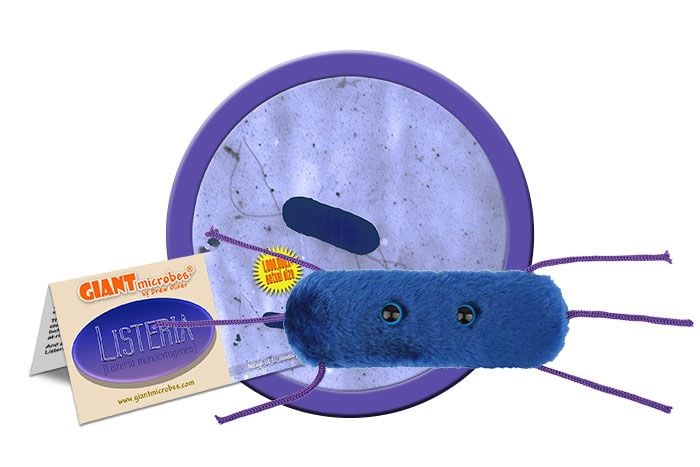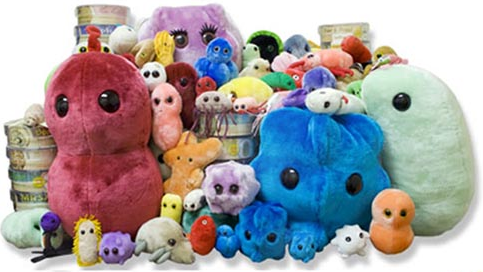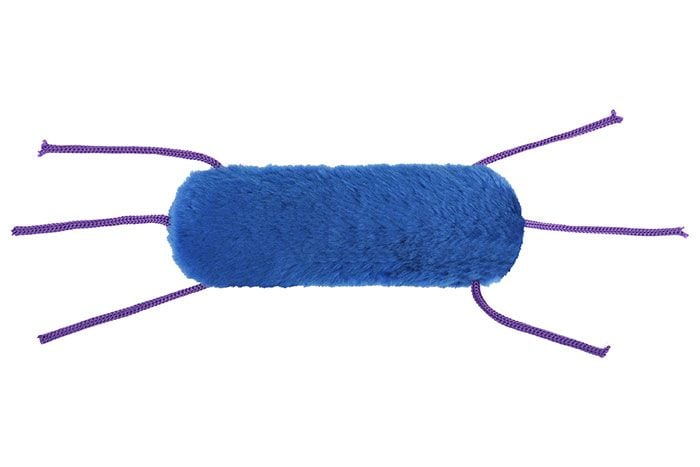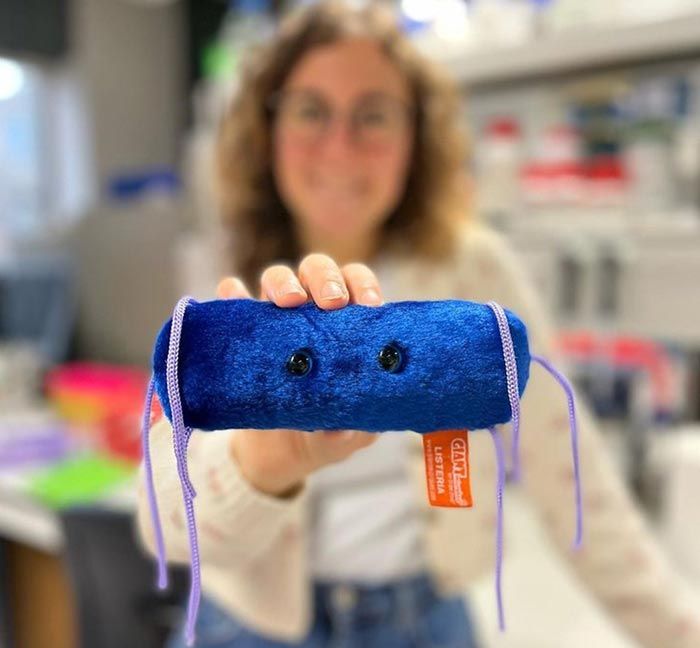Listeria (Listeria monocytogenes)
£11.95
Out of Stock
Listeria plush provides a fun hands-on-way to learn about food safety, germs and health. Mouthwash maven Dr. Joseph Lister lent his name to this microbe that pregnant women in particular should avoid.
Memorable and exciting gift for family, friends, chefs, foodies, scientists, healthcare workers and doctors. Great reminder to wash hands and practice safe food handling. Features high quality materials, realistic flagella and an educational printed card with fascinating facts about this common bacteria.
GIANTmicrobes Listeria is soft, cuddly and is a unique get well gift for loved ones dealing with gastrointestinal issue and for anyone with a healthy sense of humor!
Size: 18 x 5 x 5cm
Product Details
Additional Information
| Sizes | Giantmicrobes are based on actual microbes, cells, organisms and other critters, only 1,000,000 times actual size! Gigantic (GG) 40-60cm XL (XL) 25-38cm Original (PD) 12-20cm Minis (MM) 5-10cm each Keychain (KC) 5-10cm with clip |
|---|---|
| Materials | Plush from all new materials. Stuffed with polyester fiber fill. Surface washable: sponge with water & soap, air dry. |
| Packaging | Each plush microbe includes a printed card with fun, educational and fascinating facts about the actual microbe or cell. |
| Safety | Every product meets or exceeds U.S. and European standards for safety. For ages 3 and up. |
All about Listeria (Listeria monocytogenes)
| Name | The genus Listeria was named after Joseph Lister in 1940 for his work with surgical sterilization. |
|---|
| Where It Lives | It is a foodborne illness caused by the bacterium Listeria monocytogenes. The disease can also be spread by infected animals or contaminated soil. Cool gift for foodies or doctors. |
|---|
| Symptoms | Fever, aches, vomiting, and diarrhea. It can cause pregnancy complications in women. Other people can have symptoms like headache and stiff neck. |
|---|
| Cure | Listeriosis can be treated with antibiotics because it is a bacterial infection. |
|---|
| History |
1926: E. Murray isolated Listeria monocytogenes. Big Outbreaks: 1997: Italy outbreak infected over 1500 people. The victims were primarily from two schools, and the infection was caused by improper food safety procedures in the cafeterias. 2011: 33 dead and 147 infected in 28 states from Colorado cantaloupes. Recent Outbreaks: 2015: Listeria in ice cream affected 10 people in multiple states. Out of those 10, 3 died. |
|---|
| Fascinating Facts |
The people at the highest risk are pregnant women, newborns, older adults, and people with weak immune systems. Pregnant women are actually 10 times more likely to get Listeriosis than other people. In the United States, listeria kills about 260 people annually, with 1600 infections. Listeria can grow in the refrigerator! The way to kill off the bacteria is to cook or pasteurize the food. |
|---|









